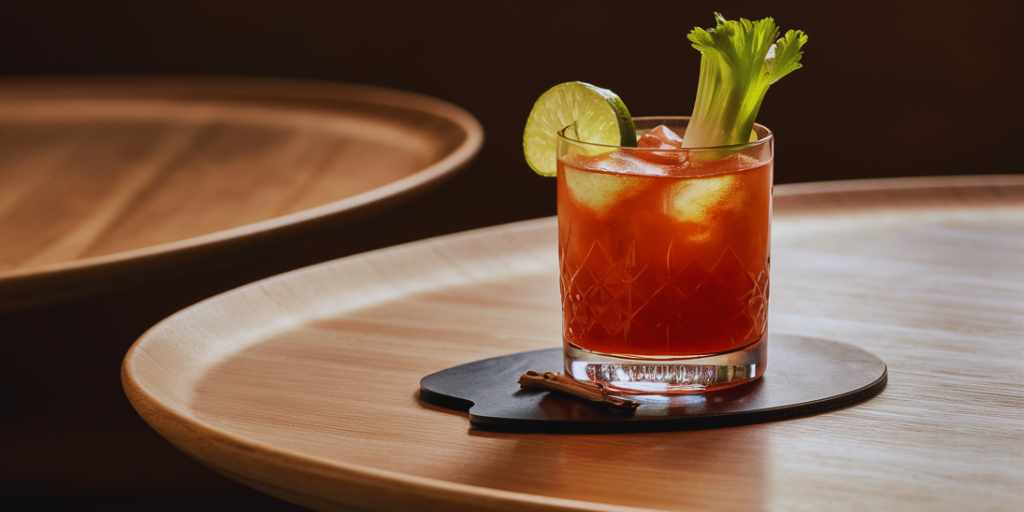In the world of mixology, the infusion of flavours has become an indispensable technique for bartenders and cocktail enthusiasts alike, elevating the drinking experience with layered complexity and bespoke taste.
An ordinary cocktail is transformed into a refreshing drink with a personalised touch by introducing a range of aromatics, herbs, and fruit essences to the base spirits. Flavor-infused mixology is not limited by tradition or convention, allowing for an endless spectrum of creativity and innovation in crafting custom cocktails.
Key Takeaways
- Flavor-infused mixology transforms cocktails with personalized taste.
- Successful infusions require an understanding of flavour profiles and pairings.
- Techniques for infusion vary and affect the intensity of the cocktail’s flavours.
Understanding the science behind flavour profiles and their synergies is crucial for successful infusion. For instance, pairing specific herbs and spices with complementary spirits can produce a harmonious blend, enhancing the natural characteristics of the alcohol.
Similarly, the choice of infusion techniques, whether steeping ingredients in spirits for extended periods or employing rapid infusion methods, plays a major role in developing the desired intensity and clarity of flavours in the cocktail recipe.
Essentials of Flavor Infusion
The art and science of flavour infusions transform ordinary spirits into distinctive beverages that delight the taste buds. This section explores the fundamental techniques to master the infusion process, from selecting appropriate alcohols to choosing the best flavour agents that enhance the taste profiles of infused spirits.
Understanding Infusion Basics
Infused spirits are created by steeping ingredients in a spirit, allowing the flavours to meld and create a unique taste experience. The duration of the infusion process varies, potentially lasting from a few hours to several weeks, depending on the desired intensity of flavours.
Monitoring the progress and taste regularly is essential to ensure the infusion achieves the correct balance and does not become overpowering.
Selecting Your Spirits
When choosing a spirit for infusion, consider the final flavour profile desired:
- Neutral spirits, such as vodka, are versatile and absorb flavours well.
- Aged spirits, like whiskey or rum, can add complexity but may need more careful pairing with flavours.
Selecting mid-range alcohol is often recommended for those who are new to infusing. This provides a balance between quality and affordability, ensuring that the flavours of the infusions stand out without being hindered by the harshness of low-quality alcohol.
Choosing Flavor Agents
Identifying the right flavour agents is integral to crafting successfully infused spirits. Here is a list of commonly used ingredients and their characteristic profiles:
- Herbs (e.g., basil, thyme): Provide aromatic qualities
- Fruits (e.g., berries, citrus): Offer sweetness or acidity
- Spices (e.g., cinnamon, peppercorns): Contribute warmth and spice
- Edibles (e.g., coffee beans, vanilla pods): Impart rich and robust notes
These flavour agents must be fresh and prepared properly (washed, peeled, or sliced) before being added to the spirit to ensure purity and clarity of taste. Once chosen, the ingredients should be submersed in the spirit and stored in a cool, dark place to infuse. The preferences of one’s taste buds should guide the selection of flavours, with consideration for complementary flavor combinations that can yield a unique and enjoyable taste profile.
Infusion Techniques and Tips
In mixology, cocktail infusion often involves incorporating flavours into spirits to create unique and complex cocktails. Proper methods and specific tips can significantly affect the final infusion’s flavour, intensity, and clarity.
Cold Infusions
Cold infusions are the most common method, where ingredients are left to sit in spirits at room temperature or in a cool, dark place to impart their flavours slowly. A key factor in this technique is infusion time, which can range from a few hours to several weeks, depending on the desired flavour intensity.
- Use a clean jar or a mason jar to ensure purity of taste.
- Increase the surface area of solid ingredients by chopping or bruising them to speed up flavour extraction.
- Once the desired flavour strength is reached, remove ingredients with a fine mesh strainer to halt the infusion process.
Heat-Assisted Infusions
Heat-assisted infusions introduce warmth to accelerate the infusion process and are especially useful when time is limited.
- A water bath can heat spirits gently with the infusion ingredients.
- Make sure to stir gently to promote even flavour distribution without introducing harshness from over-extraction.
- Carefully monitor this process, as high temperatures can evaporate alcohol and alter the desired result.
Advanced Infusion Methods
There are advanced methods like sous vide infusion for mixologists looking to experiment with more innovative techniques.
- Sous vide utilizes precise temperature control, often producing a more rapid flavour infusion by maintaining a consistent water bath temperature.
- This approach is beneficial for achieving a clear, vibrant flavour profile in a fraction of the time, as noted in the guide on mastering vacuum infusion.
By employing these infusion techniques and adhering to key tips, one can enhance the depth and character of cocktail ingredients through meticulous flavour infusion.
Crafting Infused Cocktails
Creating infused cocktails involves a careful blend of creativity and scientific precision. It’s about instilling new flavour combinations and intense flavours into spirits to elevate the drinking experience.
Building Balanced Flavors
In mixology, balance is key. A well-crafted infusion takes into account not only the primary spirit but also the complementary flavours. When infusing vodka, for example, one must consider the initial potency and how additional ingredients will either enhance or mellow its profile.
Intense flavours such as citrus peels, herbs, or spices are popular choices that, when left to steep for the right duration, can transform the vodka into a complex, nuanced base for cocktails.
Mixology with Infused Spirits
With the infused spirit as a foundation, mixologists can begin the creative process of mixing the cocktail. Whether one opts to shake or stir gently, adding other components like ice and simple syrup judiciously is essential.
The goal is to complement and not overpower the carefully crafted infusion. Depending on the intended outcome, one may serve the cocktail straight up in a chilled glass or over ice to temper the strength and allow a slow release of flavours.
Garnishing and Presentation
The final touch to any cocktail mix is its garnish and presentation, elements that should never be overlooked. They enhance both the visual appeal and the taste. A sprig of mint or a twist of orange peel adds not only a hint of colour but also a fresh aroma that can bring out the subtleties in the infused cocktail. Glass choice, too, plays a pivotal role in presentation—choosing a glass that complements the character of the drink is as important as the infusion itself.
Flavor Profiles and Pairings
In mixology, the magic happens when diverse flavour profiles harmonize within a single glass. The careful selection of juices, spices, and sweeteners can transform the ordinary into the extraordinary, crafting experiences that play upon the palate.
Citrus and Herbal Highlights
Citrus fruits, like fresh lemon juice and lime juice, introduce a zesty tang that cuts through sweetness and provides a refreshing sharpness. Pairing them with herbal highlights such as dried herbs and fresh fruit adds depth. For example, the bright notes of orange juice complement the complexity of thyme, while cranberry juice marries well with rosemary, offering a drink that is both fragrant and tart.
Combination to try:
- Lemon juice with basil
- Lime juice and mint for a twist on the classic mojito
Herbs can also provide a subtle undercurrent that elevates the primary flavours of a cocktail. They work exceptionally well with delicate floral notes and even some spices.
Spicy and Sweet Sensations
Balancing spicy and sweet sensations is an art that can lead to some of the most intriguing cocktails. The heat from hot peppers can be tempered by the sweetness from sugar or the natural fructose found in pineapple juice.
Heat meets sweet:
- Pineapple juice with a hint of jalapeño
- Ginger beer’s spice paired with a sweet fruit puree
In contrast, the effervescence of soda, sparkling water or club soda can act as a palate cleanser, separating the spicy kick from the syrupy aftertaste and creating a rhythmic sensation with each sip. Adding favourite ingredients like candied ginger or a splash of cranberry juice can personalize a spicy cocktail, making it memorable.
Mixologists wielding these combinations must balance acidity, sweetness, and spiciness to craft a well-rounded drink. They often rely on their knowledge of herbs and spices to find the perfect middle ground where the heat enhances rather than overwhelms the flavour profile.
Frequently Asked Questions

Flavor-infused mixology is an art that enhances the taste and aroma of cocktails by incorporating different ingredients. This FAQ section addresses common queries about this innovative practice.
What does infuse mean in cocktails?
In cocktails, “infused” refers to steeping ingredients like fruits, herbs, or spices in alcohol to impart their flavours into the drink. This technique can transform the profile of spirits and add complexity to the cocktail.
What is the difference between flavoured and infused alcohol?
Flavoured alcohol typically refers to commercially produced spirits that have added natural or artificial flavours. Infused alcohol is created by immersing ingredients in the spirit for a certain period, allowing the natural flavours to meld with the liquor through a more organic process.
What are the most popular herbs and spices used in flavour-infused mixology?
Popular herbs and spices in flavour-infused mixology include thyme, basil, rosemary, cinnamon, and cardamom. These ingredients can provide earthy, spicy, or sweet notes that uniquely enhance the flavours of cocktails.
How does the maceration process differ from infusion in cocktail preparation?
While maceration and infusion are often used interchangeably, some distinctions exist. Maceration is specifically the soaking of solid ingredients in liquids until flavours are extracted, whereas infusion can refer to both liquid and solid components being combined.
What are some essential tips for making a successful flavour-infused vodka?
For a successful flavour-infused vodka, use high-quality base vodka, choose fresh ingredients, and ensure proper ratios to avoid overpowering the spirit. It’s also crucial to taste regularly and strain thoroughly to achieve a clean, desired infusion.
Can you recommend DIY cocktail infusion kits for beginners?
Yes, DIY cocktail infusion kits are tailored for beginners, including jars, strainers, and flavour packets. These kits simplify the process and provide a good starting point for those new to creating their own infused cocktails.






